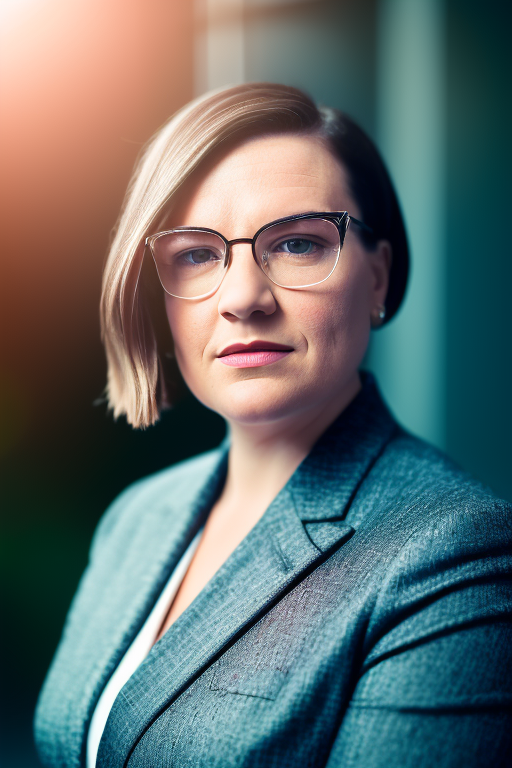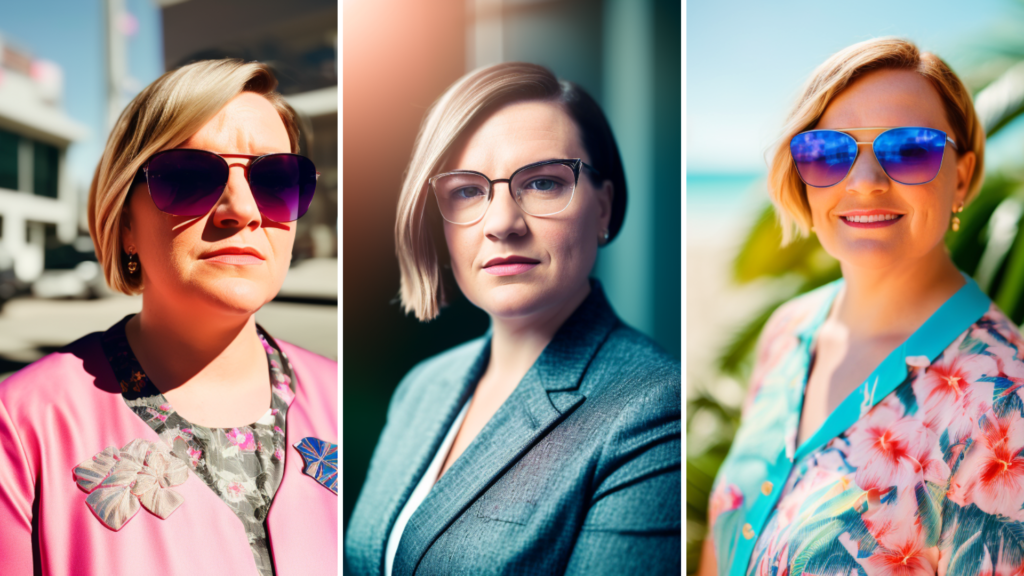Navigating through my LinkedIn notifications, one message caught my eye. It wasn’t a standard sales fare; it was an offer to generate AI-powered headshots for my profile. My interest, as a digital transformation expert, was instantly piqued. This was an opportunity not just for a profile refresh, but to delve into the world of AI algorithms, their creations, opportunities, and the looming shadows of misuse and lack of regulation.
A Glimpse into the Magic of AI-Generated Photos
I embarked on an experiment with an AI-driven image generator. Imagine having a digital artist who’s ready to conjure up any image you conceive, translating your ideas into pixel-perfect realities. That is what it felt like. Using generative adversarial networks (GANs), this tool took to creating images with the finesse of a seasoned artist.
For the uninitiated, GANs are a class of AI algorithms with two parts: the generator and the discriminator. The generator creates the images, while the discriminator judges their authenticity. This interplay results in images so lifelike, they blur the line between AI and art.
A Deeper Dive into AI-Generated Photos
AI-generated photos stem from a concept called ‘computational creativity’, where algorithms are designed to simulate or replicate the creative process. The use of AI in photo generation is not just about creating something new; it’s about understanding visual cues and contexts that humans find appealing or significant.
In the realm of AI-generated images, GANs have been a groundbreaking development. The ‘artist’ and ‘critic’ dynamic within GANs is a powerful analogy for the push-and-pull that drives innovation in the arts. The ‘artist’ (generator) creates, while the ‘critic’ (discriminator) evaluates and guides the artist towards perfection. Through countless iterations, AI can create images that can pass for photographs taken by human hands.
Exploring the Wide Array of Applications
As I delved deeper, I discovered the wide applications of AI-generated photos:
- Art and Creativity: AI transcends human limitations, creating visuals that can inspire new art movements. These systems can replicate styles of bygone eras or invent entirely new forms of visual expression. Think of an AI that can mimic the brushstrokes of Van Gogh or the surreal visions of Dali.
- Design and Content Creation: In graphic design, AI-generated images can swiftly provide mock-ups or final pieces that reflect current trends or timeless aesthetics. For content creators, this means access to an ever-replenishing library of original images, circumventing the need for stock photos and the associated licensing issues.
- Virtual Worlds and Gaming: For game designers, AI opens up a universe of possibilities. Imagine landscapes and characters that evolve in real-time, adapting to a player’s style. This level of dynamic creation isn’t just efficient—it could redefine storytelling in virtual spaces.
- Medicine and Healthcare: Diagnostic imaging enhanced by AI can reveal patterns invisible to the human eye, offering new insights into diseases like cancer or Alzheimer’s. Training simulations for surgeons can become incredibly detailed and patient-specific, improving outcomes significantly.
- Entertainment and Special Effects: In filmmaking, AI-generated images enable creators to visualize the impossible, bringing dragons to life or resurrecting historical figures. It’s not just about making the impossible possible, but doing so in a cost-effective and time-efficient manner.
The Benefits of AI-Generated Photos
My foray into AI photos revealed several benefits:
- Time and Cost Efficiency: AI’s ability to quickly generate images can cut down project timelines from weeks to hours, enabling companies to allocate their human and financial resources elsewhere.
- Consistency and Customization: Brands can use AI to produce images that adhere to their visual identity, ensuring a consistent aesthetic across all materials. Customization goes a step further, allowing for the creation of personalized content that speaks directly to an audience’s preferences.
- Innovation and Creativity: AI can be programmed to push boundaries and explore new artistic territories, sparking innovation that can influence human creators.
- Accessibility: For healthcare providers in resource-limited settings, AI-generated images can be a critical tool, providing high-quality diagnostic visuals without the need for expensive imaging equipment.
The Shadow of Misuse and the Need for Regulation
Yet, there’s a darker side to this technology:
- Misinformation and Deepfakes: The ability to create photorealistic images can be weaponized to produce ‘evidence’ of events that never happened, a concern that becomes especially pressing in political contexts.
- Privacy Concerns: Generating images that closely resemble real individuals without their consent could lead to a new form of identity theft, where one’s likeness is used without permission.
- Ethical Dilemmas: The AI-generated art could raise questions about authenticity and value. What is the role of the human artist in a world where machines can create masterpieces?
- Job Displacement: There’s a valid concern that AI could supplant human photographers and designers. We must consider how to balance the benefits of AI with the value of human skill and labor.
This calls for robust regulation and ethical frameworks to ensure AI is used responsibly.
I invite you to ponder over an AI-generated image I am attaching here. It’s a product of the AI application I experimented with. Notice the intricate details and lifelike quality. Yet, know that this represents more than technology’s triumph; it signifies a call to action for responsible innovation.

Wrapping Up
Through my LinkedIn adventure, I’ve glimpsed the future, vibrant with AI’s creative potential but shadowed by significant challenges. As I explore these dualities in my blog, I urge us to come together to shape a future where AI-generated images are not just tools of innovation but also beacons of ethical and responsible technology use.
Join me on this journey. Let’s marvel at the marvels of AI while keeping a vigilant eye on its ethical implications. For every stunning AI-generated LinkedIn profile picture, let’s remember the need for mindful progression in the AI narrative.
Visit my blog for an in-depth exploration, and let’s commit to a future where we leverage AI-generated photos for good, steering clear of the pitfalls that come with unregulated advancements. Together, let’s ensure that the AI we embrace today lays the foundation for a safer, more creative, and more ethically conscious tomorrow.

